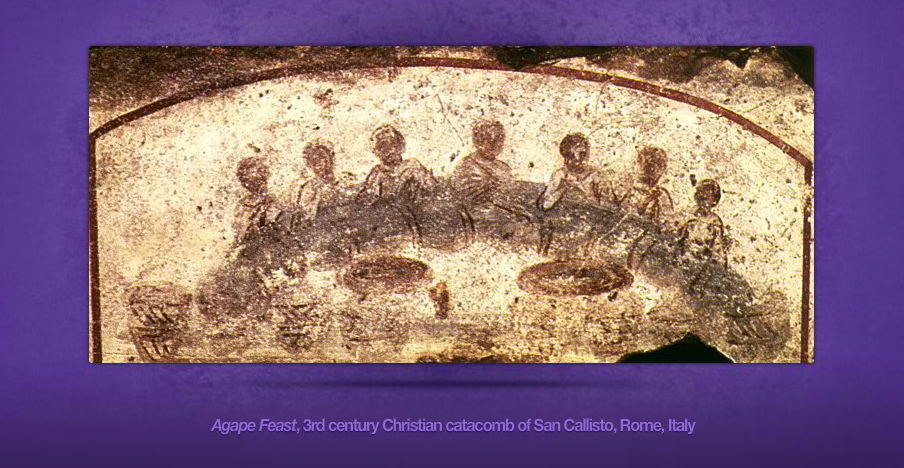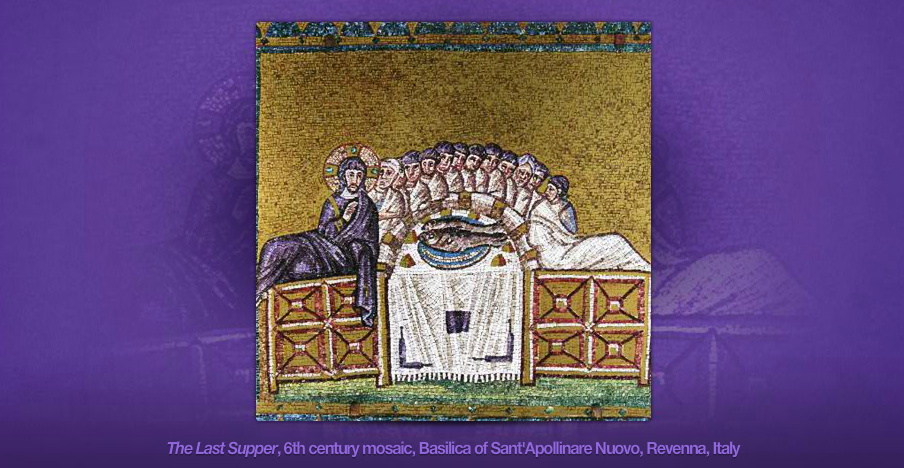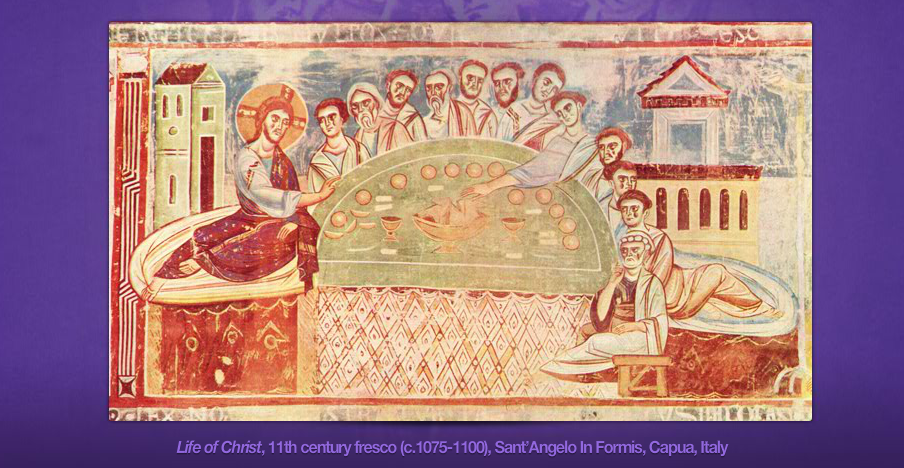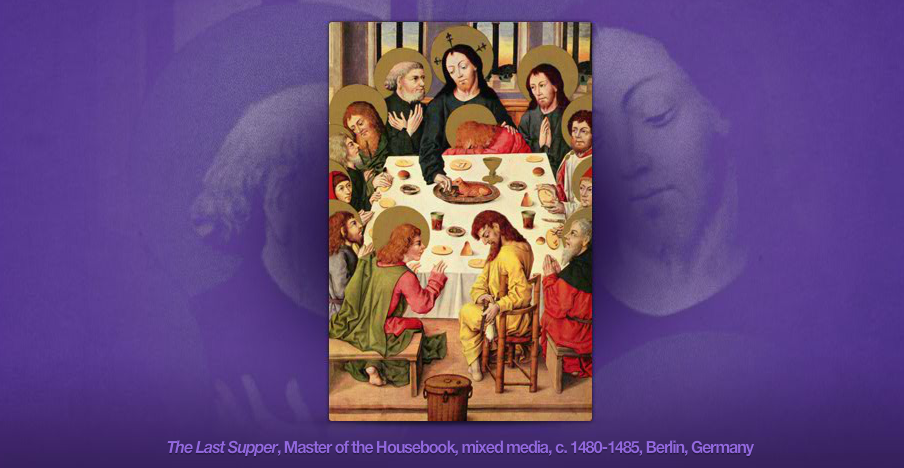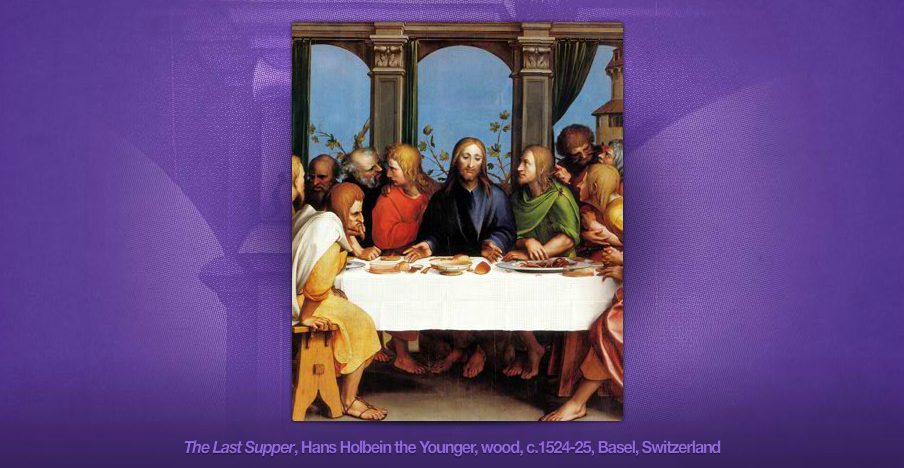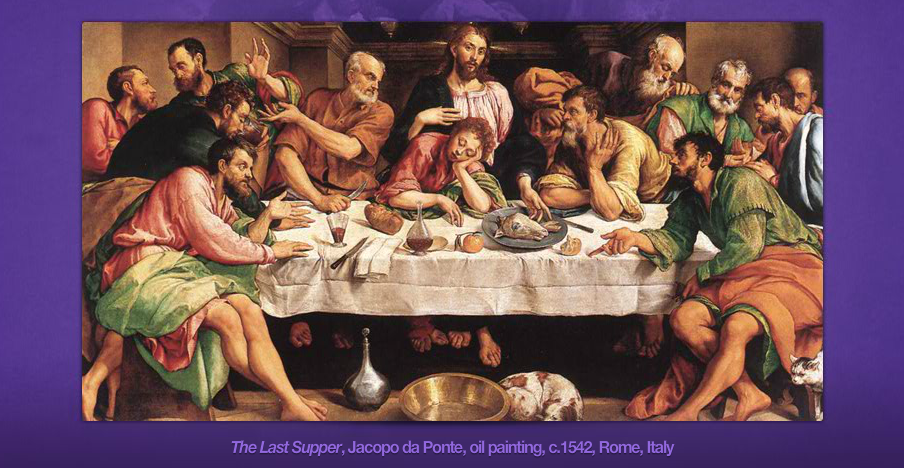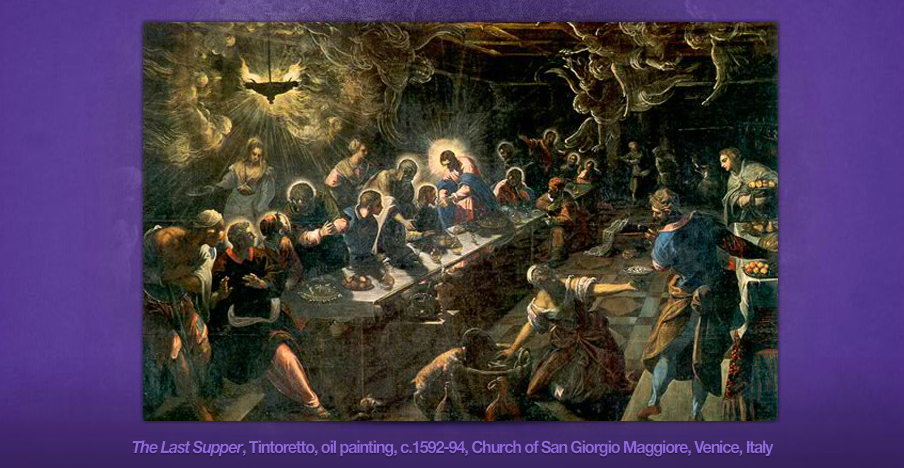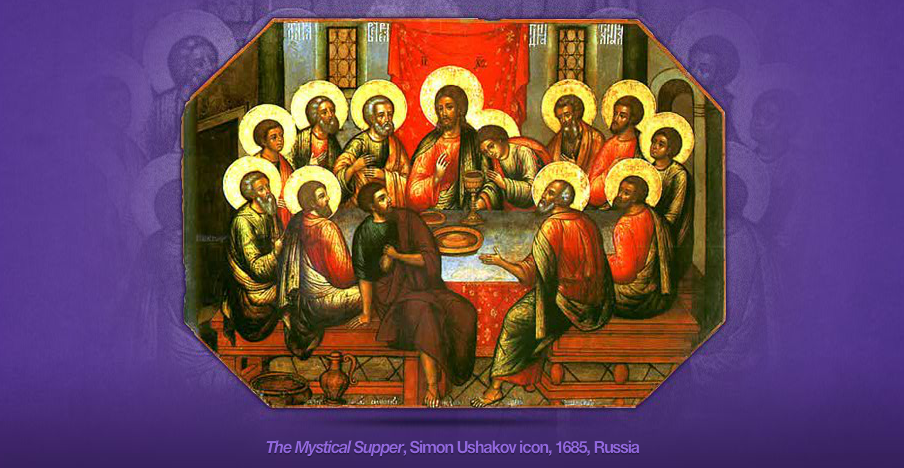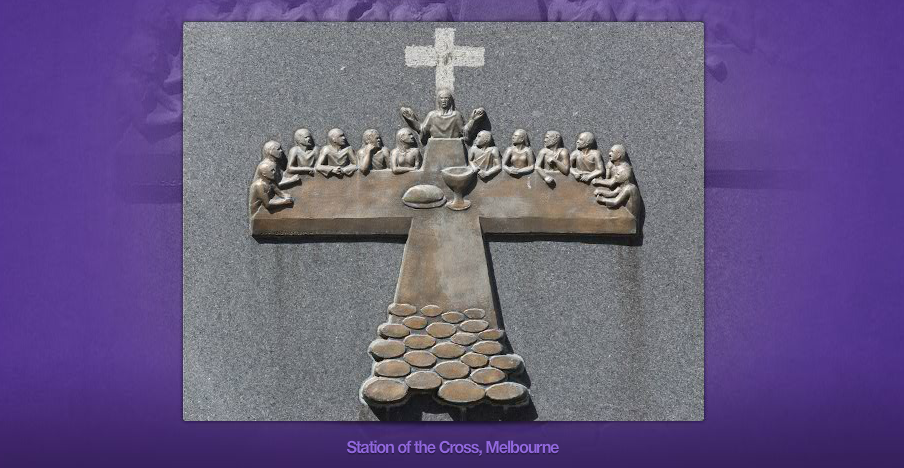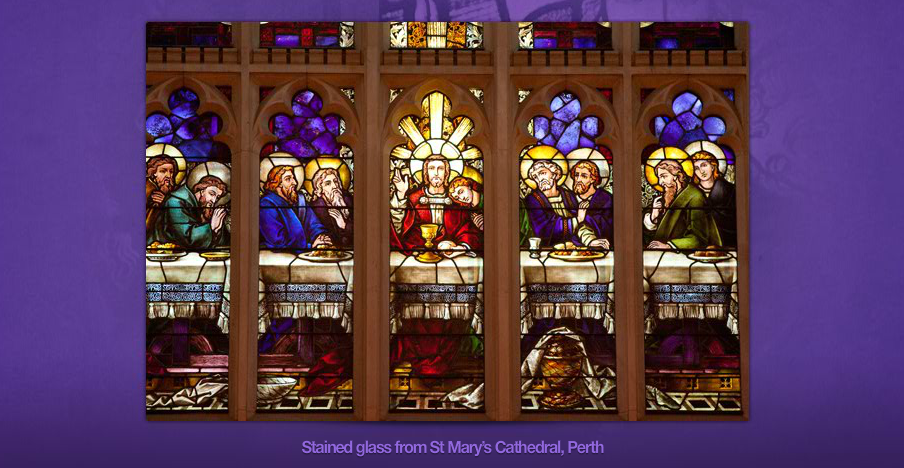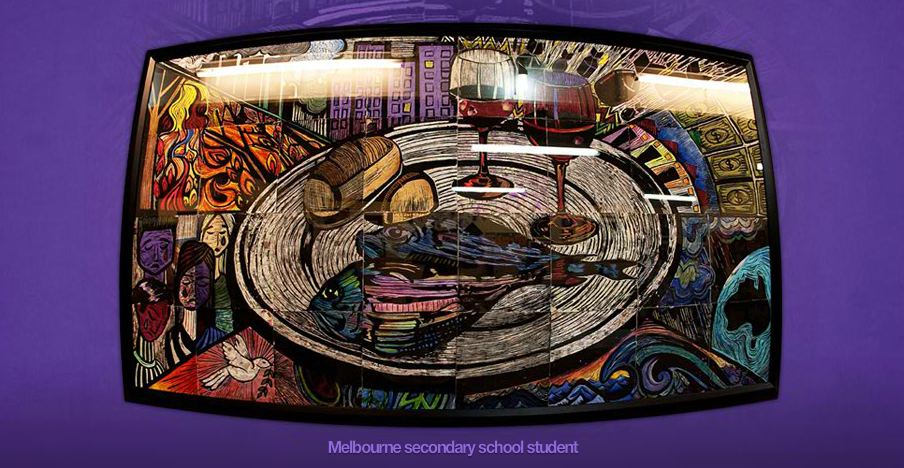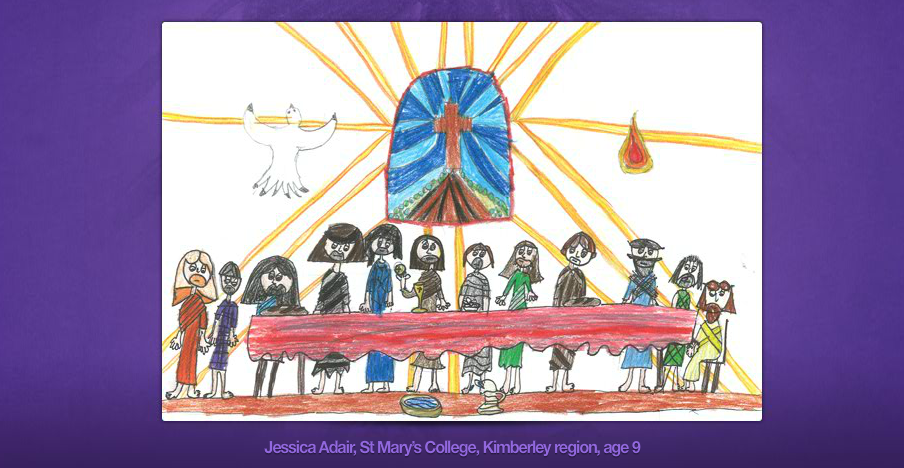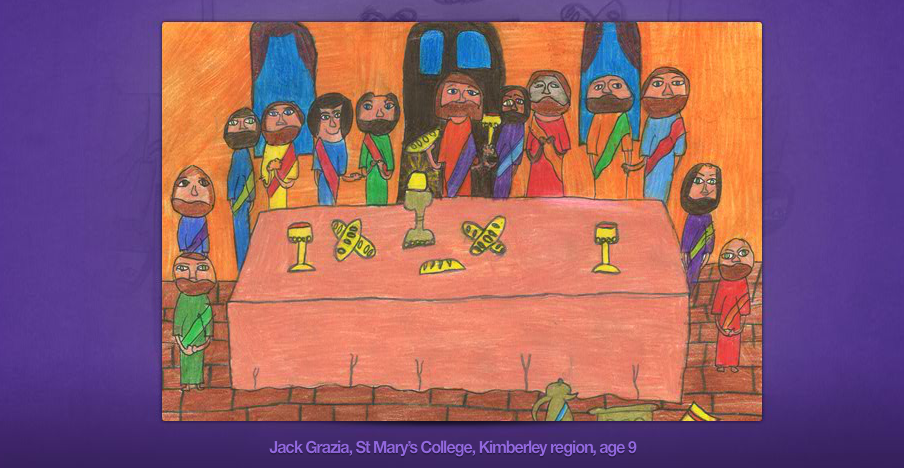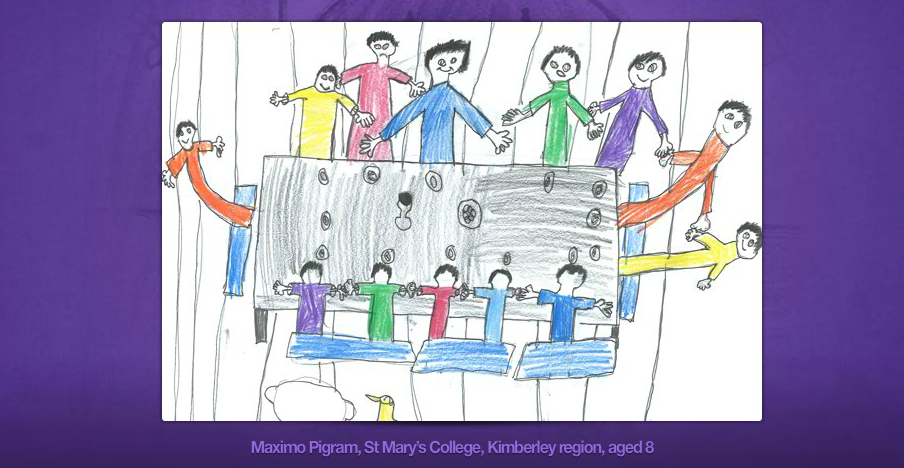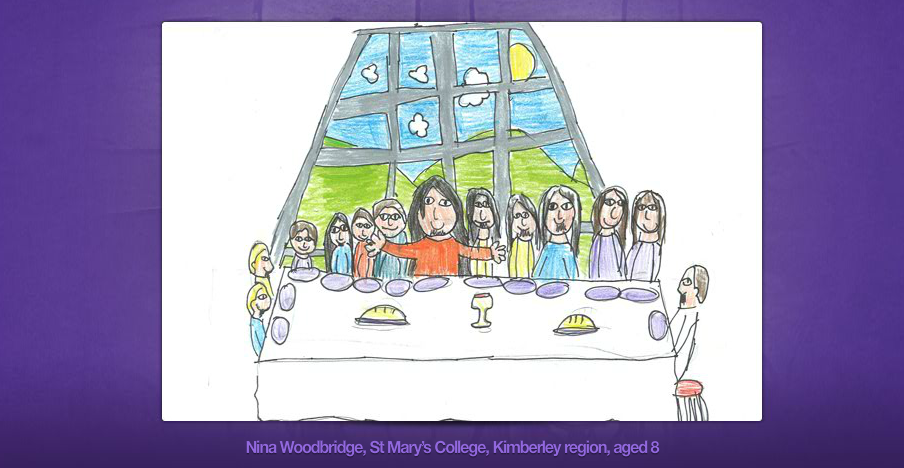IMAGES OF THE LAST SUPPER
Artists have always seen the Last Supper as a story of great love and great betrayal. Jesus is about to give his life for those he loves.
He gathers his 12 chosen friends for a last celebratory meal. They do not know that he is about to be betrayed and that one of them will be the betrayer. Jesus knows, and at a critical moment in the feast he replies to Judas the traitor, who protests ‘Surely not I, Rabbi?’ with ‘You have said so’. Only Judas leaves the room. Later Jesus reminds the other guests of his unconditional love for them as well as of their own human weakness. ‘You will all become deserters because of me’.
The portrayal of this sacred meal has been central in Christian art from the 2nd century. We have no portrait of Jesus so we do not know exactly how he looked. But we have thousands of images of him created by artists. In different ages he is portrayed differently, usually like a person of the artist’s time, and hardly ever as a Jew. Yet he was Jewish.
Among the earliest representations is this 3rd century image from the early Christian catacomb of San Callisto in Rome. You can visit it when you go to Rome. It is not the story as told by Matthew or Luke or Mark. What you see is an agape, a feast. Seven (a sacred number) are seated around a table on which are 7 baskets, each with 12 loaves. Like a lot of modern art, here is a symbolic telling of what is at the heart of belief for Christians but is deliberately hidden from those who would not value it.
The recent painting by a Melbourne secondary school student does something like that too. The artist has taken the things around them and given the items special meaning – the fish, the wine, the bread, the city, and the dove.
Many Medieval and Renaissance artists were more explicit. The early 6th century mosaic in the Basilica of Sant’Apollinare in Ravenna has Jesus seated like an honoured Roman on the left of the table. He raises his right hand for he is speaking. Only two look at him – the others turn their heads to Judas at the far end.
Jacobo Tintoretto’s feast is a much more rollicking affair. The Venetians are crowded into a huge room – there are angels, servants, and women. Mary, Jesus’ mother, is on the left. Tintoretto has used light itself as a symbol. Jesus here is the light.
Hans Holbein’s Last Supper is a solemn German occasion. His characters are closely observed for he knew anatomy and was a famous composer of images. And he is a master storyteller. Look at Judas closely and you will see Holbein’s prejudices and those of his age.
Great art takes time and reflection. It can reveal us to ourselves even though we live in a very different time and place. Great Christian art speaks of God and his love for each one, and also of the understandings of those who create it at a particular time.
The meaning of the Last Supper is at the heart of what it is to be a Christian. ‘Do this in memory of me’ was Jesus’ command and invitation.
For Reflection and Discussion
1
Undertake an internet search for artistic depictions of The Last Supper. Source from six to eight images and use this worksheet to provide the following information: title; artist; explain how Jesus is depicted; name who is present; describe what is happening; and consider how well the image portrays Jesus instituting the Eucharistic sacrifice of his Body and Blood.

